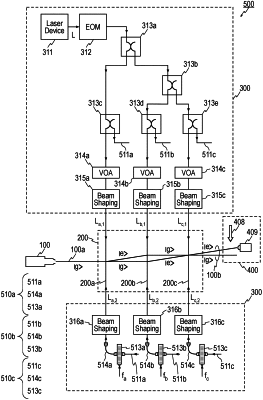| CPC G01C 19/721 (2013.01) [G01C 19/58 (2013.01); G01P 3/36 (2013.01); G01P 15/14 (2013.01); G02F 1/11 (2013.01); G02F 2/02 (2013.01); G02F 1/093 (2013.01); G02F 2201/02 (2013.01)] | 6 Claims |

|
1. An atomic gyroscope comprising:
an interference system configured to make an atomic beam interact with three or more moving standing light waves;
an optical system including an optical modulating device
and being configured to generate at least one of the three or more moving standing light waves by counter-propagation of a first laser beam from the optical modulating device and a second laser beam; and
a monitor configured to detect angular velocity or acceleration by monitoring the atomic beam from the interference system,
wherein the optical modulating device includes:
a frequency shifter; and
an optical fiber to guide one of two laser beams generated by division of a single laser beam to an opposite side of an incident position onto the interference system of the other of the two laser beams, beyond the interference system without crossing the atomic beam,
the one of the two laser beams is frequency-shifted by the frequency shifter,
the one of the two laser beams that is frequency-shifted enters the interference system as the first laser beam, and
the other of the two laser beams enters the interference system as the second laser beam.
|